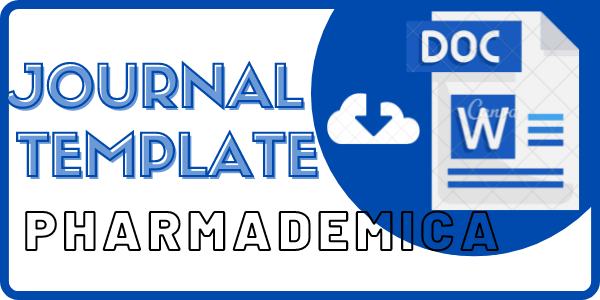Toxicity Test for Yellow, Red, and Purple Flowers (Cestrum elegans) Leaves Using the Brine Shrime Lethality Test Method
DOI:
https://doi.org/10.54445/pharmademica.v1i1.6
 Abstract View:
Abstract View:
434
 PDF downloads:
PDF downloads:
682
Keywords:
toxicity test, cestrum elegans, BSLTAbstract
Cestrum nocturnum with white flowers has potential as a medicine, so it is possible that yellow, red and purple flowering plants also have bioactivity. Toxicity tests on plants can increase research on new sources of ingredients for food additives, drugs, pesticides, etc., so as to find the prospective economic value of these plants and maintain plant biodiversity. The aims of this research were to determine the differences in the toxicity of terpasan leaves (Cestrum elegans) of yellow, red and purple flowers. Steps of this research were made the simplicial of terpasan leaves, phytochemical screening, and toxicity test using the Brine Shrimp Lethality Test (BSLT) method. The yield of ethanol extract terpasan leaves with yellow, red and purple was 16.58%, 22.06% and 22.14%, respectively. The results of phytochemicals screening of three types terpasan leaves using the third tube method attached contain secondary metabolites of alkaloids and terpenoids. Based on the toxicity test with the BSLT method using a variation of 150; 200; 250; 300 and 350 ppm mortality percentages were 0.77%, 5.71%, 8.64%, 22.38% and 42.3%. The C50 of the red-pressed ethanol extract was 458.00 ppm, the LC50 of the purple-pressed ethanol extract was 180.127 ppm, the LC50 of the yellow-pressed ethanol extract is 30 – 200 ppm. Conclusion:Based on the LC50 value, the ethanolic extract of the yellow and red leaves has activity as a pesticide, because it has an LC50 value of 200 -1000ppm. The ethanolic extract of purple terpasan leaves has antimicrobial activity because it has an LC50 value of 30-200 ppm
Downloads
References
Cahyadi, R. (2009). Uji toksisitas akut ekstrak etanol buah pare (Momordica charantia L.) terhadap larva artemia salina leach dengan metode brine shrimp lethality test (Bst). Medical faculty.
Chikkaswamy, B. K. (2015). Anti-oxidant potential, antimicrobial activities and phytochemical screening, in three species of cestrum. International Journal of Advanced Research in IT and Engineering, 4(3), 1–10.
Desfosses, M. (1820). Extrait d’une lettre à M. Robiquet. J. de Pharmacie, 6, 374–376.
Djarijah, I. A. S. (1995). Pakan ikan alami. Kanisius.
Juniarti, J., Osmeli, D., & . Y. (2010). KANDUNGAN SENYAWA KIMIA, UJI TOKSISITAS (Brine Shrimp Lethality Test) DAN ANTIOKSIDAN (1,1-diphenyl-2-pikrilhydrazyl) DARI EKSTRAK DAUN SAGA (Abrus precatorius L.). Makara Journal of Science, 13(1). https://doi.org/10.7454/mss.v13i1.378
Meyer, B. N., Ferrigni, N. R., Putnam, J. E., Jacobsen, L. B., Nichols, D. E. j, & McLaughlin, J. L. (1982). Brine shrimp: a convenient general bioassay for active plant constituents. Planta Medica, 45(05), 31–34.
Oktavia, A. I. (2017). Etnobotani Tumbuhan Beracun Di Desa Ngadiwono Kecamatan Tosari Kabupaten Pasuruan. Universitas Brawijaya.
Oladimeji, H. O., Nia, R., Kalu, N., & Attih, E. E. (2007). In vitro biological activities of Carica papaya. Res J Med Plant, 1, 92–99.
Putri, M. K. D., Pringgenies, D., & Radjasa, O. K. (2012). Uji fitokimia dan toksisitas ekstrak kasar gastropoda (Telescopium telescopium) terhadap larva Artemia salina. Journal of Marine Research, 1(2), 58–66.
Wagner, J. G. (1993). Absorption analysis and bioavailability. Pharmacokinetics for the Pharmaceutical Scientist, Technomic Pub. Co. Inc. Lancaster, PA, 159–206.
Downloads
Published
How to Cite
Issue
Section
License
Copyright (c) 2021 Anggraeni In Oktavia, Mardiyah Mardiyah, Anisa Lailatusy Syarifah

This work is licensed under a Creative Commons Attribution-ShareAlike 4.0 International License.









.png)








